I quit my job last week. I was a product manager at Substack, where I worked for exactly 3 years and 9 months, joining first as an intern on the “Writer Development” team (just me at the time), before hopping around the org under the guise of titles like Writer Resources (Partnerships), Product Specialist (Community), Product Researcher (Design), Product Manager (Writer Growth), Product Manager (App), and finally Product Manager (Core Product).
I didn’t go into this expecting to care very much. I told Hamish in one of our first interviews that “I didn’t dream of labor,” and dared Jairaj to fire me at a late-night dive bar afterparty in 2021. I joked constantly about the uselessness of product managers, both before and after I became one. Graduating into the techlash, my orientation to work was more Uncanny Valley than Lean In; I harbored a default suspicion of grinning CEOs who describe the workplace as a “family” or preach “making the world a better place.”1 I saw myself entering the company as an undercover sociologist, not a loyal worker bee.
Quickly, though, I cared quite a bit—about the mission, my coworkers, the writers we worked with. First of all, I couldn’t fake liking the people. And while work-life balance would’ve been pleasant, you have to get in the pressure cooker if you want to grow. Let a place shape you, at least sip the kool-aid. My generation is well-practiced in the art of ironic detachment, but too much coolness can end up as incuriosity: a premature assumption that there’s nothing to learn. This role, meanwhile, was a rare opportunity to sit in the position of making tough decisions and unsexy trade-offs—to learn to deploy power and not only critique it.2
I now tell younger friends that a job—not a shit and stifling one, but one where you can really learn and grow—is actually a great place to spend your early twenties.
Most of my coworkers at Substack are skeptics by nature. Skeptical of institutions, establishments, and mainstream consensus; of fancy slide decks and corpo-speak; of titles and hierarchies and blue-checks old and new. Ex-punk Gen-Xers and blackpilled Zoomers; self-fashioned hipsters and indieheads. Enneagram 4s. People who wouldn’t be caught dead reading Malcolm Gladwell or taking a BuzzFeed quiz. Somehow, all my colleagues seemed to moonlight as serious creatives on the side. On nights and weekends, our support specialists, product designers, and software engineers became novelists, singers, stylists, poets, producers, and photographers. It’s a rare trait for a Silicon Valley startup—everyone was secretly cool.
For all the irony and eye-rolling, we were dead earnest about the company mission. We wanted to arm the rebels, root for the underdogs, make America’s present-day gadflies crazy stupidly rich. A decade after the idea went out of vogue, Substack’s leadership maintained the starry-eyed hope that the open internet and its marketplace of ideas could be a democratizing, liberating force. It was hard not to be compelled by such sincerity.
At Substack, we talked to writers all day long. Everyone at the company knew thirty-some key names, regardless of whether they had a customer-facing role. We didn’t craft artificial “customer personas” to frame product needs, because you could mention “Bari Weiss” or “Bill Bishop” and everyone knew who you meant. Creators joined us for Q&As at All Hands, beta tests and strategy calls, happy hours and dinner parties. The #feedback and #love channels delivered an hourly barrage of alternately furious and fawning email screenshots. I felt bad for new hires; onboarding meant memorizing an infinite array of 3-letter initialisms (ACX, HCR, JRK, etc.) that were name-dropped in conversation like A-list celebs. If you shipped anything that inadvertently made a writer upset, you’d feel genuinely terrible, every single time.
Trust was the currency that mattered most. Journalists have been burned again and again, by tech companies and private equity firms and social media mobs, so they tend to be a uniquely paranoid type. Trust could be nurtured over years of personal relationships and lost in a day; on calls with creators, we made sure to speak like normal humans, not salespeople or growth-grubbing execs. Artists learn to spot posers from miles away, so authenticity is baked into the culture. It was strange and special to get paid to show up as myself.
For me, one of the most valuable parts of working on a live social platform was learning to bridge the theory-practice divide. In college, I read countless papers trying to understand social media dynamics from the outside. But while independent research is important, it’s always going to be at a structural disadvantage. Access to platform data is limited, academic publishing is painfully slow, and controlled lab experiments just aren’t the same as real-world tests. By the time your paper passes peer review, some Growth PM in Menlo Park has inevitably tossed and redesigned the entire UI. Conversely, working at a startup means that when you have a hypothesis about how to reduce harassment or improve a recommender system, you can immediately ship an MVP, get results, and iterate.
Put through that process, reality usually hits like a truck. Many concepts that sound good on paper are infeasible to implement, or simply don’t produce the expected results. It’s frustrating when that happens, of course, but the pace of experimentation and learning at a startup is unparalleled. I think this is an especially important form of rigor for theorycels like me. Building product forces a different kind of thinking than essay-writing: going from a critical mindset to a solutions-oriented one, from beautiful abstractions to concrete (and falsifiable) reality.3 And when you’re lucky, the ideas work!
Our Head of Design,
, wrote a brilliant and funny post called “The Irrepressible Monkey in the Machine.” He argues that for all the talk of social media companies conspiring to “hack dopamine” and “manipulate elections,” platforms like Facebook can’t even manage to persuade its users of more prosaic business goals like “post more often” and “believe Facebook is good.” Or take a Substack example: I sometimes see users hypothesize that Substack is artificially boosting notes and posts about subscriber count to pressure writers to grow. Nothing could be further from the truth. We’ve actually tried to downrank this kind of content, but it performs well because users keep engaging with it. Platform evils are often projections of very human sins.4I had a conversation with Chris once about why good product thinkers are like good novelists. In both cases, didacticism is the enemy. Designing consumer internet products requires viewing humans as we really are, not how we wish we were.5
If I came into Substack asking, How does an ostensible societal mission interact with the container of a venture-backed startup?, I now have something like an answer. It is this particular dialectic—the constant push-pull of idealism vs. pragmatism, lofty mission statements vs. base human desires—that produces effective change.
Substack identified a business model (subscriptions) that aligns reader, writer, and company incentives. It proved this model could be viable for solo writers by personally persuading the first Substackers to make the leap, and in some cases, guaranteeing it with grants. While other platforms ramped up lock-in, Substack promised writers the right to exit: full ownership of one’s email list, payment relationships, and content. This is a big sacrifice—e.g. Patreon and YouTube do not give creators this portability—but it points our product roadmap in the right direction, ensuring we work to justify the 10% fee. And of course, to make the whole system go, creators have to make things people will pay for. These well-aligned incentives deliver more sustainable impact than fickle corporate charity ever could.6
It’s now taken for granted that you might send a favorite blogger $5 a month, or that going solo might be a serious and lucrative alternative to working at the New York Times. Ten years ago, this wasn’t the case. Because of Substack, writers gain more leverage against mainstream platforms and media institutions; even staff journalists can better negotiate for higher salaries and email list ownership. In this sense, the company’s core innovation was cultural, not technological. Put in economic terms: Legacy media had undervalued individual voices for centuries, and Substack saw an opportunity for arbitrage.
To be clear, I don’t think startups can solve most social issues, nor will Substack fix every problem plaguing media today. In particular, I don’t know if the subscription model suits projects that require a high upfront investment of time and money (e.g. books, films, science, investigative work), and it can be easy to get audience captured if you’re too sensitive to the ups and downs of a revenue chart. No product is a panacea; no single act will save us. But imagine a Venn diagram where one circle is “profitable business ideas,” and the other is “things that are good for the world.” They aren’t the same circle, not at all—but there are precious opportunities in the overlap.
Given all this, you might wonder why I’m leaving. I’ve had an excellent and edifying time, so it’s a hard job to quit. But I also didn’t plan to work in tech—I wanted to be a writer. I’d spent summer 2020 recruiting for journalism jobs, of which there were none, and everyone was fleeing to Substack anyway. I thought if I couldn’t be a writer, then supporting them here would be the next-best thing. That was the right call. But I never forgot my first goal, and today conditions are different. There’s a real business model for writing, and I’ve seen it work firsthand.
So I plan to make a bet on myself, I plan to “go independent,” and I plan to try, at least for a while, to take a proper shot at the full-time-writer-thing. I’ll probably even do it on Substack—from the other side of the platform. Obviously this is a risky idea and prone to failure, but the challenge excites me. I’m just young and stupid and unencumbered enough to make the leap, and just battle-tested enough to have the savvy and discipline to maybe, possibly pull it off. And I hate half-assing things—per Paul Graham, you can only have one “top idea in your mind" at a time. I need to get in the fucking arena.
As for the project itself, the tongue-in-cheek tagline I’ve been using is “Dwarkesh meets Ezra Klein but a girl”: a solo newsletter-podcast on technology, politics, and culture. There are some specific topics I’m especially eager to dive deep on (and even do proper reporting!7), but I want to make space for plans to change in the next month of exploration. My primary aim is to think without constraints. When I have all the time in the world, and no stakeholders to please, where will my attention go?
If anyone reading this has spent time as a full-time independent writer or researcher, I’d love to talk! I’m hoping to cobble together an editorial strategy, funding plan, and accountability structure over the next couple months, and would be grateful for ideas and support. Or if you aren’t a writer yourself, but know of relevant grants/fellowships/funding opportunities, my email and DMs are open.8
Otherwise, stay tuned for a launch in January 2025. Subscribing to this newsletter is the best way to keep up:
🌱 little life updates
Substack is hiring PMs, engineers, and more! I recommend working here.
I spent a good chunk of the year collaborating with my friend Nik Marda and Mark Surman of Mozilla to publish an affirmative vision for Public AI. We argue that greater investment in open, public, and shared AI tools/resources is key to spreading innovation, increasing competition, and steering AI toward the public interest.
I got to bare it all (reveal my unhealthy internet habits) in this fun interview with
.Favorite recent reads:
I think Intermezzo is Sally Rooney’s best work. She’s able to branch out of her trademark style (the autofictional anxieties of overeducated leftist writer types) to embody different personalities/voices (namely men), and the plot revolves around a complex sibling relationship rather than a romance (but of course there is romance too).
The Rejection Plot: Tony Tulathimutte’s Rejection is the other literary talk of the town. This essay in the Paris Review is his excellent nonfictional outtake on novels of unrequited love. Required reading for the situationship age. Recommendation via
.- did a fascinating write-up of his time working for Palantir, focused on what made the talent and culture unique. I have critiques of the company but enjoyed this a lot, and as an org-soc nerd, wish more employees wrote similar deep dives (obviously this post is me playing my part).
12 Months of Mandarin: I’m so impressed by this guy’s rigor and dedication; he goes into insane detail about his language learning techniques. Getting a Mandarin tutor is toward the top of my unemployment to-do list (I’d like to spend more time in China next year), so this was very motivating.
The Husband Stitch: The iconic green ribbon story, retold for adults. I don’t know how else to describe it but this story will wrap its fingers around your neck. Recommendation via
.
One more reminder: Chris and I are going live on Tuesday at 12pm PT in the Substack app for a little conversation and Q&A. There are so many thoughts I couldn’t squeeze into this little blog post, so happy to talk more. You can put questions in the comments!
Onward and upward,
Jasmine
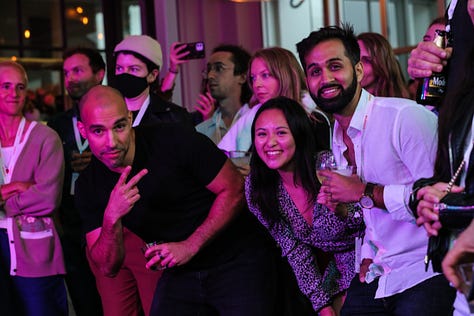
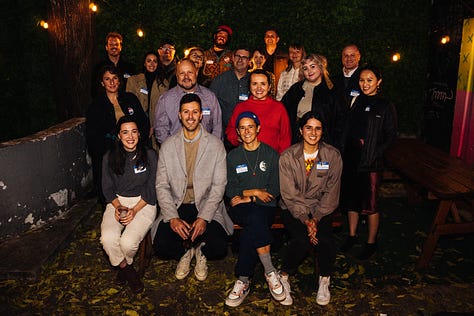
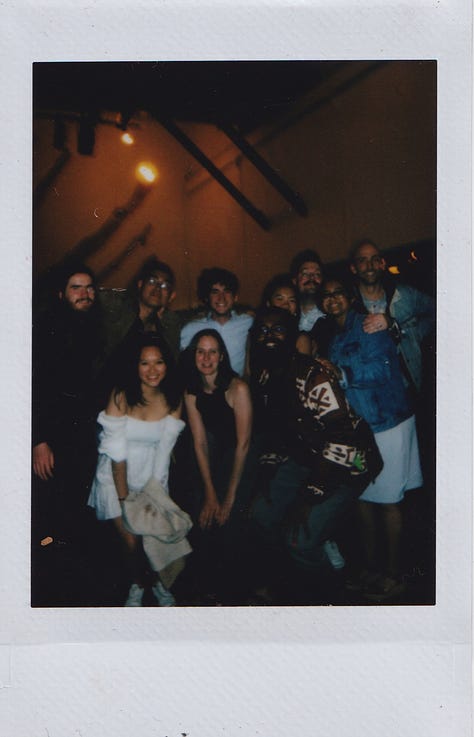

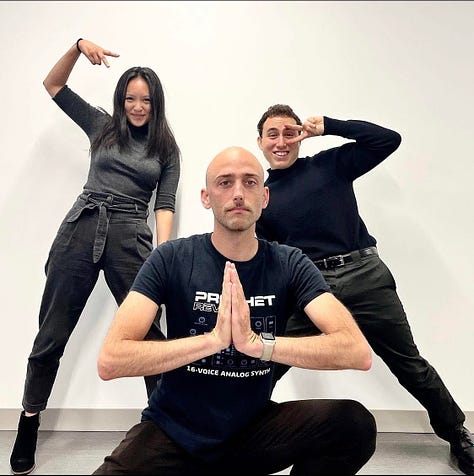
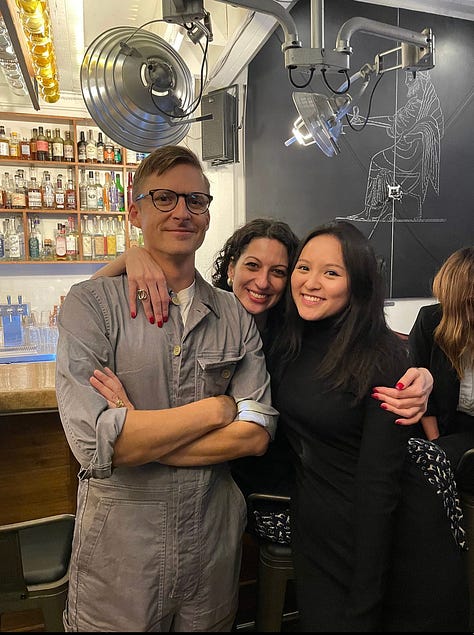
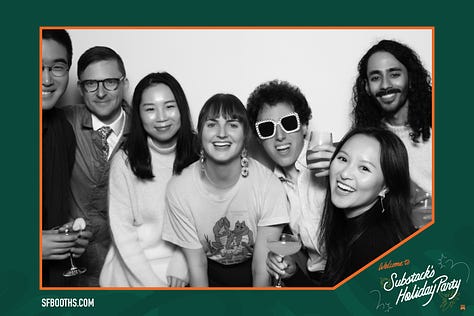
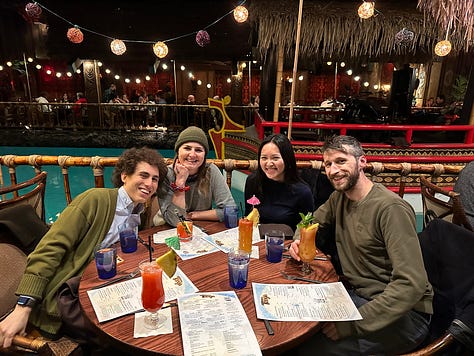
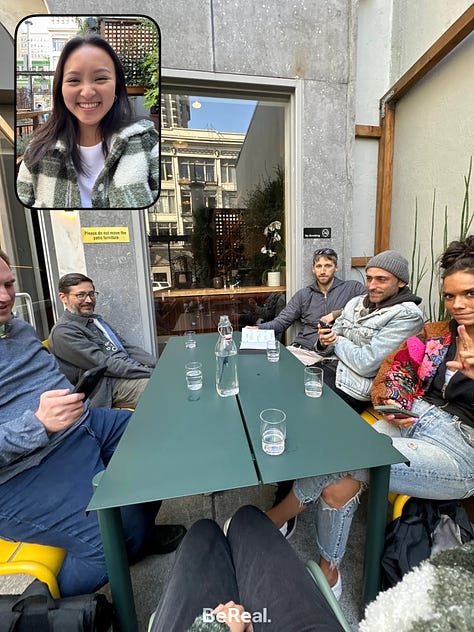
To his credit, Chris never said these things.
The Mills in my head is screaming “Hey Siri play The Beginning of Infinity by David Deutsch” !!!
Not saying platforms shouldn’t ever shoulder responsibility for amplification when it comes to more serious ills! But real-world ethics is thorny—there’s a meme in product world about how “Make a country selector for a dropdown” is one of the most politically fraught design decisions you can make. People pretend moderation policy is easy, but ask yourself: Do you really want a couple guys in San Francisco deciding who counts as a “terrorist”?
Chris talks about this as the “drug future” vs. the “culture future.” My edit is that we probably need a bit of both. Substack knows, for example, that putting your favorite writer’s face on a screen will make you more likely to click a button. But we should use that quirk of human psychology to do things that are good for everyone involved—to help your short-term dopamine brain align with your long-term aspirations to be smart and cultured.
In case this sounds self-aggrandizing, I’ll clarify that I have nothing to do with these decisions, which the founders baked in from the beginning. It’s an elegant incentive construction that I admire a lot.
So much of writing online is about other writing online. Discourse about discourse, memes about memes, metacommentary about metacommentary. I’d like to take the time and opportunity to write from real-world experience and conversations beyond the latest Twitter drama.
Reply to this email (jaswsunny at gmail dot com) or DM me on Substack:

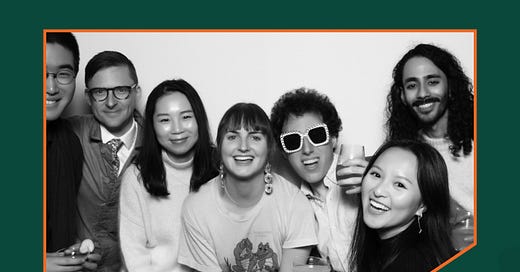


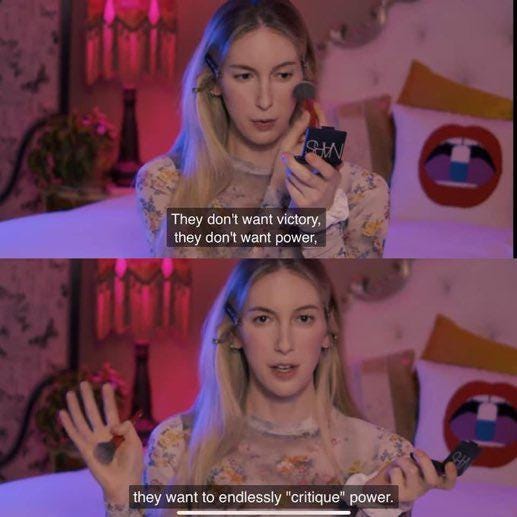
Congrats! Welcome to the underdog gadfly club. This is the best paragraph ever written about Substack:
"For all the irony and eye-rolling, we were dead earnest about the company mission. We wanted to arm the rebels, root for the underdogs, make America’s present-day gadflies crazy stupidly rich. A decade after the idea went out of vogue, Substack’s leadership maintained the starry-eyed hope that the open internet and its marketplace of ideas could be a democratizing, liberating force. It was hard not to be compelled by such sincerity."
You capture Substack so well here. How lucky we all were to get the chance to work with you. Will be rooting for you always. Congrats and please let's plan many drink dates. Oh and crash all the Substack parties we will never think its weird.